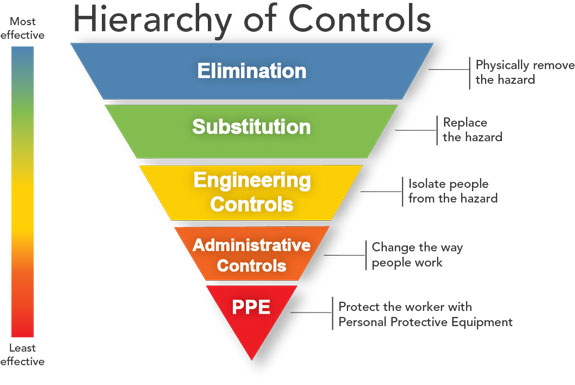Combustible Dust: The Big Risk of Small Particles
December 2, 2020
Combustible dust fires and explosions don’t show up in our newsfeeds very often, but they are catastrophic when they do. For many, the Imperial Sugar explosion in 2008 was their introduction to the topic. Sugar can cause an explosion? Yes, and the results were devastating:
- 14 fatalities
- 124 OSHA citations
- Over $4 million in OSHA fines
- Months of lost production and long-term financial impacts
Dust Safety Science compiles semi-annual and annual reports on combustible dust incidents in the United States and Canada and notable incidents worldwide. This year, they noticed a 30% decrease in incidents, likely due to the pandemic and decreased productivity. Following are U.S. statistics from 2019 and the first half of 2020:
| 2019 | JANUARY – JUNE 2020 | |
|---|---|---|
| FIRES | 175 | 67 |
| EXPLOSIONS | 37 | 11 |
| INJURIES | 42 | 17 |
| FATALITIES | 1 | 0 |
Despite the decrease in incidents, several industries face significant risks and potential heavy losses from combustible dust in their facilities, including food and manufacturing companies. Luckily, these facilities can benefit from proactive risk management, including hazard assessment, control implementation, and training, and reduce the chances of a future disaster.
Types of Incidents
As noted in the table above, some combustible dust incidents result in fires and others in explosions. Fires occur when the long-established fire triangle is complete: fuel (combustible dust), an oxidizer (air), and an ignition source. Without just one of these components, a fire is not possible. Adding a fourth component, dispersion, can cause flash fires with fast-traveling flames moving through dispersed fuel in the air.
Explosions occur when the typical fire triangle (fuel, oxidizer, ignition source) has two additional components:
- Dispersion of fuel
- Confinement where pressure builds up during rapid combustion
This confinement or enclosure can be a room, an entire building, or even a piece of equipment. Often, a small explosion disperses more dust into the air, resulting in a second larger explosion if ignition sources remain. There is a link to a video demonstrating a flash fire and two combustible dust explosions in the resources list at the end of this article.
Regulatory Standards
Following the Imperial Sugar disaster, there was a push for federal OSHA to develop a combustible dust standard. However, OSHA dropped that initiative in 2017. Several existing federal OSHA standards address aspects of combustible dust hazards, such as the general industry standards for housekeeping and welding, cutting and brazing, but no comprehensive standard currently exists.
The most comprehensive and coherent guidelines for controlling combustible dust risks are several standards from the National Fire Protection Association (NFPA), starting with NFPA 652, Standard on the Fundamentals of Combustible Dust. Greatly simplified, this standard’s key steps are:
- Hazard identification
- Dust hazard assessment
- Implementation of controls
- Employee training
Dust Hazard Identification and Assessment
Generally, combustible dust is composed of very fine particulates that can burn. They present the most significant hazard when distributed in the air within a specific concentration range. Federal OSHA has developed a one-page list of combustible dust types, including agricultural products (food ingredients, plant-based dust), metals, plastics, and chemicals known to present this risk. Besides the presence of a listed product in your facility, other triggers for performing a dust hazard analysis are:
- Frequent sweeping or vacuuming to maintain good housekeeping
- Local exhaust ventilation system to control dust
- Dust buildup on elevated horizontal surfaces, such as the tops of light fixtures, piping, and ductwork
When assessing your operations for combustible dust, pay attention to specific components or ingredients of your products and processes. Waste products present another potential source. Sanding, cutting, or even friction caused during transfer or transport can create dust that can become a hazard when accumulated. Even if a product in your facility isn’t listed in OSHA’s document of combustible dust, it is prudent to determine its combustibility.
NFPA 652 describes the process for assessing the combustibility of dust, including tests by a certified laboratory. The finest dust that hangs in the air creates the highest risk, so be sure to collect dust samples from elevated locations, such as the top of ductwork, undisturbed top shelves, or similar areas where fine dust settles out.
Once a type of combustible dust has been identified in the workplace, a qualified individual must conduct a dust hazard assessment. This evaluation gauges the level of risk presented by the dust, products, processes, and areas contributing to the hazard, and other factors. The hazard assessment should also evaluate the effectiveness of any risk controls that are in place. An analysis is then performed to determine any gaps where the risk level is not acceptable and needs additional controls.
Implementation of Controls
When approaching a project where risk needs to be reduced, the hierarchy of controls should prioritize potential solutions.
- Can the hazard be eliminated by discontinuing a process or material? This is probably the most challenging option.
- Can a product with lower combustibility be used instead?
- Can local exhaust ventilation capture the dust?
- Does a strict cleaning procedure need to be implemented?
- As a last resort, do employees need to wear personal protective equipment specific to the combustible dust hazard?

Employee Training
Finally, to ensure that the implemented controls are effective, employees must be trained on the hazards, in-place controls, and responsibilities specific to their job description. Additionally, any contractors should be trained on proper protocols before their work begins.
Combustible dust is a serious risk that can easily go unnoticed until an incident occurs. Assessing products, processes, housekeeping practices, and engineering controls can go a long way to preventing a serious fire or explosion. If you have questions or need assistance with risk control items at your business, reach out to Parker, Smith & Feek for more information.
Resources & References
- Dust Explosion Video, https://youtu.be/HbMR-CbFLNg?t=43
- Federal OSHA: Combustible Dust List, www.osha.gov/Publications/combustibledustposter.pdf
- Federal OSHA: General Combustible Dust Resources, www.osha.gov/combustible-dust/guidance
- NFPA 652, Standard on the Fundamentals of Combustible Dust
- ACGIH, Industrial Ventilation: A Manual of Recommended Practice
- OSHA Trade Release, www.osha.gov/news/newsreleases/trade/07072010
- Combustible Dust Incident Database, dustsafetyscience.com
- Hierarchy of Controls, www.cdc.gov/niosh/topics/hierarchy/default.html
The views and opinions expressed within are those of the author(s) and do not necessarily reflect the official policy or position of Parker, Smith & Feek. While every effort has been taken in compiling this information to ensure that its contents are totally accurate, neither the publisher nor the author can accept liability for any inaccuracies or changed circumstances of any information herein or for the consequences of any reliance placed upon it.


